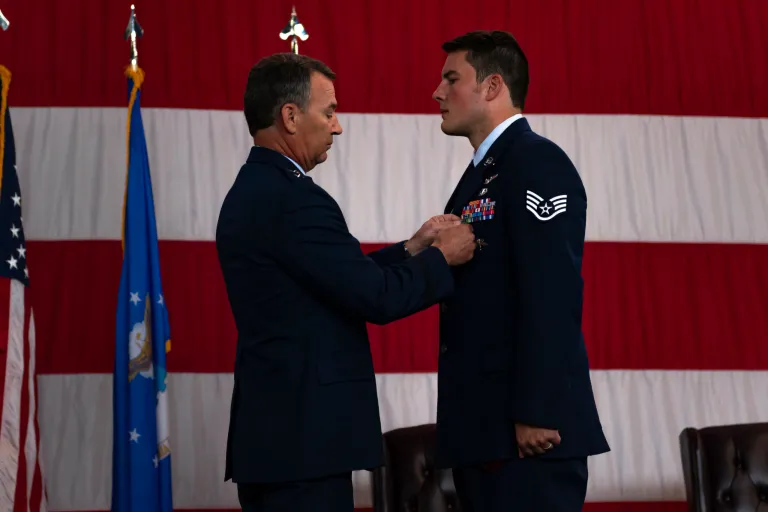I want to take this opportunity to talk about Movement Phasing Phasing for our needs means movement that does not happen at the same time. Probably the easiest way to describe phasing is to talk about heel strikes while marching. See how all three heels will strike the marching surface at three different times? That’s phasing. You are either: In …
AFMAO – Zero Margin for Error
This investigation is grounded in a review of five critical articles from prominent news sources—including Stars and Stripes, NBC News, Washington Post, the American Legion, and NPR—which collectively detail a pattern of failures that constitute a betrayal of trust by Air Force Mortuary Affairs Operations (AFMAO). This historical record highlights instances of mishandled veteran human remains and failed accountability, unequivocally …
Mission Overreach and Organizational Erosion: A Call to Re-Establish Ceremonial Standards Under The Air Force Honor Guard
Finished 24 October 2025. I’ve spent years detailing the operational conflicts that are actively undermining the Base Honor Guard program online through my website and social media. This is more than just a turf war; it’s about the legal requirement to preserve a congressional mandate. To download this position paper in PDF, click here. Download the sample suggested DAFI rewrite …
The “Honor by Dishonor” Fallacy, Part 2
Memorial Day, Armed Forces Day, Veterans Day. Powerful, solemn days. People feel it in their bones — the sense of loss, the weight of sacrifice, the pride in service. And as coordinators, presenters, and participants, we want to make the moment meaningful. We want the ceremony to leave an impact. But sometimes, that desire turns into something else.
The “Honor by Dishonor” Fallacy, Part 1
I have coined this new term, a new fallacy of logic. It is a manifestation of grief and wanting to do something above and beyond for the deceased or, in many cases, doing bigger and better than last year’s (Independence Day, Memorial Day, etc.) ceremony. The image at the top of the page was generated by artificial intelligence at my …
“Marching Doesn’t Win Wars”
The value of marching isn’t about the act itself, but about the discipline, skills, and teamwork it instills that can be applied to many different areas of life.
The DrillMaster’s Job
Not too long ago I was encouraged to find a JROTC team, take them from their current state and bring them to state, regional, and national competitions and win at all three levels. But the last sentence was an insulting, “Or you could write another book.” Behind the Scenes I’ve had winning teams in multiple states for multiple years. I …
“To All Who Shall See These Presents, Greeting:”
The phrase “To all who shall see these presents, greeting:” is a traditional legal and diplomatic statement that dates back centuries. In the context of military awards and commissions, it serves as a formal opening to a document of great importance. Here’s a breakdown of its meaning: Essentially, the phrase is a formal announcement to the world that the enclosed …
Why M1903s are Black, and Fire Engines Are Red
I recently received a belligerent question from an individual who saw my posts on Facebook about restoring the replica rifles I have and the processes I’ve been experimenting with. I was performing much needed maintenance on my Glendal DrillAmerica Rifles and used this time to experiment on what looks better and what works better. One experiment is seeing what looked …
The DrillMaster Essay Competition
This is the first of what I hope to be many competitions for cadet programs to win equipment.










